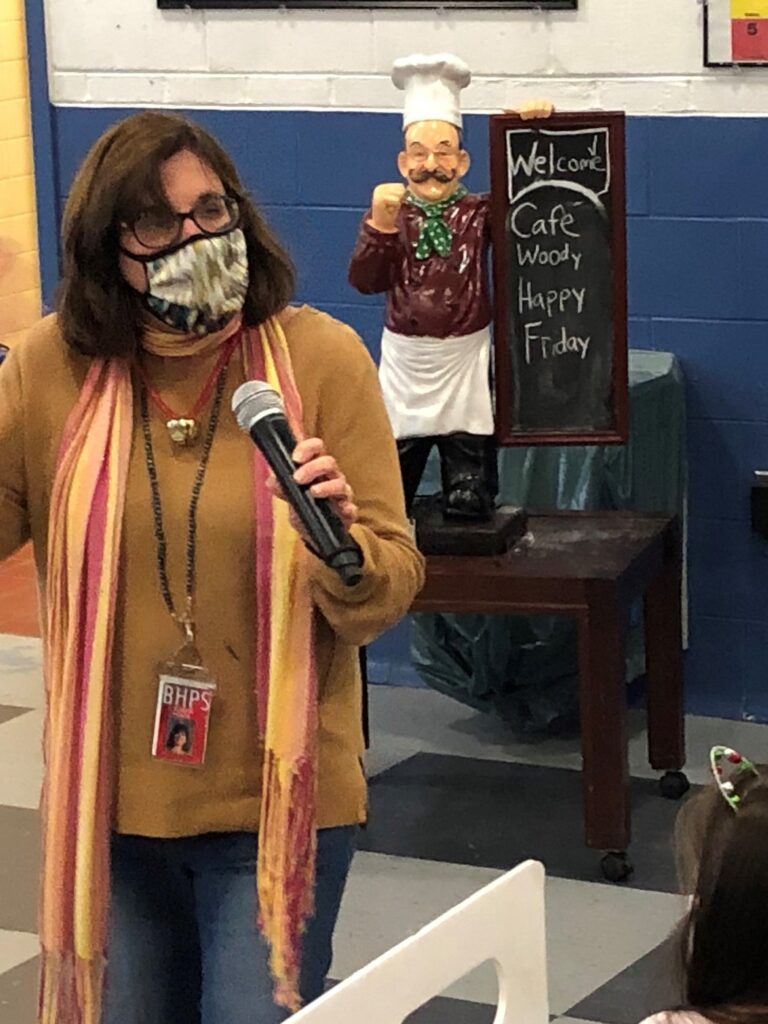
Café Woody
Submitted by Niamh Grano, BHPS
Anyone who has ever walked into an elementary school cafeteria knows it is not the quietest experience! Students are excited to be out of the classroom and with their friends…and some just can’t wait to have that special treat that was packed in their lunchbox! However, for many students, the school cafeteria can be a place that is often noisy, boisterous, and unpleasant.
Susan Poage, a first-grade teacher at William Woodruff Elementary School, became a member of the cafeteria lunch staff. Now, able to understand why so many students may find the cafeteria experience overwhelming, Poage asked herself, “How can the cafeteria be a more engaging and inviting time and place for students?” And the Cafeteria Reimagined project was conceived.
The first step in the action research project was to ask every first-grade student what they liked and didn’t like about the cafeteria. Poage also sent a survey to teachers asking how they were preparing students for lunchtime and what they noticed about students’ behaviors once they returned to class. With all the feedback and data, it was time to start reimagining the cafeteria and create Café Woody.
In addition to changing the look of the cafeteria and treating lunchtime more as a restaurant experience, Poage created a series of intervention activities to enhance and build up the skills students need to be a “Best Guest” in the Cafe. Throughout the weeks, students have learned the expectation of what it looks like, sounds like, and feels like to participate in a social eating experience including, starting conversations with other students sitting around them, how to stay on topic and ask questions, not to “yuck someone else’s yum,” and why it is important to have rules when eating.
Prior to lunchtime, and consisting of approximately 20 minutes a week, teachers present that week’s interventions to students, skills are practiced in class, and then applied in the Café. Each lesson is presented with a literature component and activities that can appeal to all learners. The Café staff also receives a sheet explaining the intervention and ways they can help the students become “Best Guests,” so that all stakeholders are involved.
“Everything in the cafeteria now serves a purpose. Anchor charts are framed and decorate the walls to remind students of the expectations while at the Café, as well as tools to redirect inappropriate behavior,” said Poage. “It is extremely important for students to have a comfortable atmosphere at lunch, so when they return to the classroom, they are ready to learn.”
In these few short months, the transformation from the typical cafeteria lunch time experience to the Café lunchtime experience is remarkable.
“It’s amazing to see the progress these students have made both in the Café and classroom following lunch,” said Poage. “I can hear them telling jokes to each other, starting conversations, and even eating their healthy foods first!”
While this model has been piloted in first grade, the goal is to create a comfortable cafeteria experience for all the grades in William Woodruff Early Childhood Center.


